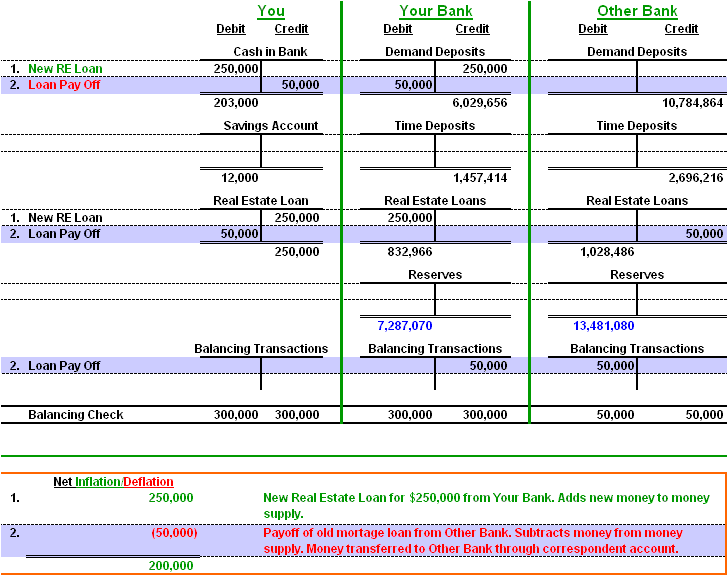The Free Market Center
The Free Market Center

After you close the real estate loan at Your Bank, a balance still remains on the old real estate loan at Other Bank. Of course, You and Your Bank want to payoff this loan.
Your Bank will take the money out of your account to assure the loan gets paid. If Your Bank has an account with Other Bank (banks have accounts with other banks, referred to as "correspondent" accounts), it will make the transfer to that bank by notifying them and reducing their deposit balance with Other Bank.
The entries follow this sequence:
Your Bank
Other Bank
You
With one double entry transaction at each of three entities (You, Your Bank, and Other Bank), your old real estate loan gets paid and the quantity of money declines by $50,000.
As a net result of these two transactions (your new $250,000 real estate loan that creates money and the $50,000 payoff of your old real estate loan that reduces money) You and Your Bank have created $200,000 (net) in new money.
Seems complicated, but if you follow the entries, you will find it simple.
Note: In many cases the transfer of $50,000 would go through the Federal Reserve Bank. I will cover such a transfer later.
These entries show the part of the process that you can see.
© 2010—2020 The Free Market Center & James B. Berger. All rights reserved.
To contact Jim Berger, e-mail: